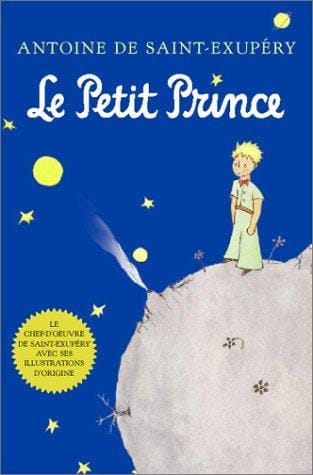Le Petit Prince (French Language Edition): Summary, Themes & Study Tips
Explore summary, themes and language tips for reading Le Petit Prince in its original French edition.

Introduction
Since its publication in 1943, "Le Petit Prince" by Antoine de Saint-Exupéry has enchanted readers across generations and cultures. While translation has helped disseminate its whimsical wisdom worldwide, the French language edition retains a lyrical magic that is difficult to replicate. This article explores the plot, major themes, symbolism, and practical advice for anyone eager to experience the novella in its original tongue. Whether you are a lifelong Francophile, a language learner, or a curious reader, discovering the prince’s interstellar voyage en français can deepen both literary appreciation and linguistic skills.
Brief Synopsis
"Le Petit Prince" opens with an aviator’s emergency landing in the Sahara Desert, where he meets an extraordinary child who claims to have journeyed from a tiny asteroid called B-612. Over eight days, the boy recounts visits to neighboring planets, each inhabited by a singular adult caricature: a king, a vain man, a drunkard, a businessman, a lamplighter, and a geographer. These encounters satirize narrow adult preoccupations—power, pride, wealth, and routine—while highlighting the prince’s childlike clarity. The narrative merges aviation adventure, philosophical dialogue, and fable, culminating in the moving farewell between the aviator and the prince, whose mysterious departure invites multiple interpretations.
Main Characters
Although the novella is brief, its cast is memorable. The Petit Prince himself embodies innocence, curiosity, and moral intuition. The Aviator, often read as Saint-Exupéry’s alter-ego, represents adulthood’s capacity for rediscovering wonder. Secondary figures, from the Fox that teaches the prince about love and responsibility to the Rose who personifies fragile yet demanding affection, serve allegorical functions that feel universal despite their simplicity.
Universal Themes
The enduring appeal of "Le Petit Prince" stems from themes that resonate across age and culture. The book champions imagination and emotional authenticity over utilitarian logic. It critiques materialism through the businessman who obsessively counts stars but never appreciates their beauty. The famous dictum, "On ne voit bien qu’avec le cœur" (One sees clearly only with the heart), encapsulates the novella’s core message: essential truths are invisible to the eye. Friendship, responsibility, and the bittersweet nature of love are examined with poetic precision that encourages readers to evaluate their own priorities.
Rich Symbolism
Saint-Exupéry’s background as an aviator infuses the text with aerial imagery that symbolizes freedom and perspective. The deserts, stars, and baobab trees evoke isolation, hope, and latent dangers of neglect, respectively. Reading the French edition reveals subtle wordplay, such as the fox’s instruction "apprivoiser" (to tame), which carries nuances of mutual domestication and commitment that many translations flatten. Understanding these linguistic layers enhances one’s grasp of the story’s complex emotional landscape.
Why Read the Original French Edition?
Language shapes thought, and Saint-Exupéry’s prose relies on rhythm, sound, and idiomatic turns that resist direct translation. Phrases like "dessine-moi un mouton" possess a music that English versions approximate but never fully match. Additionally, cultural references—such as the formality of French address and word genders linked to symbolism—enrich interpretation when encountered firsthand. Reading in French also offers the thrill of engaging with one of the most beloved works of francophone literature without mediation, placing you in dialogue with millions of native speakers who cherish the same text.
Language-Learning Benefits
At roughly 16,000 words and written in clear, concise sentences, "Le Petit Prince" is ideal for intermediate learners aiming to elevate their comprehension. The narrative mixes everyday vocabulary with poetic constructions, introducing colloquial interjections like "S’il vous plaît…" alongside expressive imagery. Because the plot is widely familiar, readers can infer meaning from context, reducing reliance on dictionaries and reinforcing intuitive learning. Annotated editions often feature margin glosses and footnotes that clarify archaic or figurative phrases, making self-study manageable.
Tips for Reading as a Learner
1. Use a Dual-Language Edition
Start with a bilingual copy that places French and English texts side by side. This arrangement lets you check comprehension without intensive dictionary work, preserving narrative flow.
2. Read Aloud
The musicality of Saint-Exupéry’s prose emerges when spoken. Reading aloud strengthens pronunciation and deepens emotional connection to the story’s cadence.
3. Keep a Vocabulary Journal
Record recurring terms like "mouton" (sheep), "fauve" (wild animal), and idiomatic expressions such as "coup de vent" (gust of wind). Revisiting these lists solidifies retention.
4. Watch or Listen to Adaptations
Animated films, audiobooks, and theater adaptations in French reinforce listening skills and illuminate interpretive possibilities, reinforcing textual analysis.
5. Discuss with Others
Joining a francophone book club or online forum encourages active usage of new vocabulary and fosters cultural exchange.
Selecting the Best Edition
Most French language editions maintain the author’s original watercolor illustrations, vital to the tale’s charm. Gallimard’s "Folio" pocket edition offers portability and high-quality printing at an affordable price. For collectors, the luxuriously bound "Édition Fac-similé" reproduces the 1943 manuscript and drawings with archival accuracy. Digital versions on Kindle or Kobo supply built-in dictionaries that streamline lookup, while audiobook renditions—narrated by actors such as Bernard Giraudeau—provide expressive pronunciations for immersive study.
Conclusion
Reading "Le Petit Prince" in French is more than a literary exercise; it is a voyage into the heart of language, imagination, and human connection. The novella’s delicate balance of simplicity and depth invites reflection long after the final page. By approaching the text in its original words, you honor Saint-Exupéry’s artistic intent while advancing your own linguistic journey. As the fox reminds us, what is essential is invisible to the eye—but it comes alive vividly when read en français.



